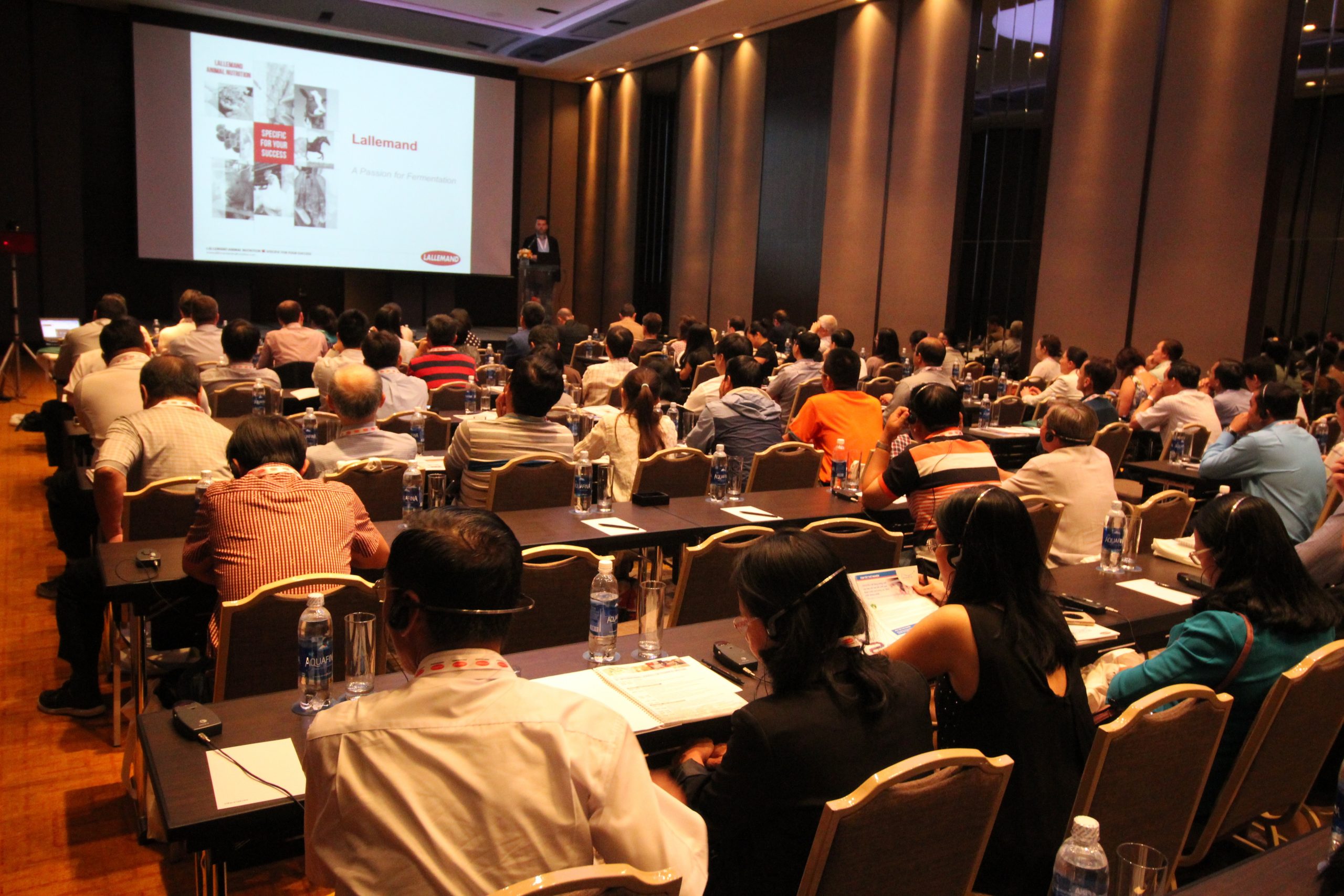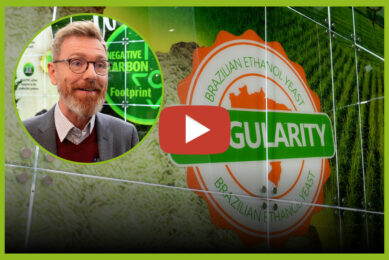Lallemand touches on the future of pig nutrition research

Lallemand Animal Nutrition cast a glimpse into the future of pig nutrition during its 9th Technical Meeting about its yeast additive Levucell SB. On the menu: how to deal with heat stress and how to make the most use of insight into what’s in a pig’s gut?
Where better to be than a tropical country when discussing new research on heat stress? That is why the 9th edition of the technical update took place in Ho Chi Minh City, Vietnam, on Wednesday, 25 October 2017. About 110 swine nutrition experts from Vietnam and about 15 other countries worldwide attended the event.
Heat stress in sows
David Renaudeau of the French National Institute of Agronomic Research (INRA) kicked off the sessions on heat stress. He stated that ongoing breeding genetic selection has caused pigs to be increasingly susceptible for heat stress, pointing to an ‘antagonism’ between production and robustness traits.
Every 1 degree higher ambient temperature, as from 18 up until 32°C, will reduce daily sow feed intake by 2.6 MJ, he calculated. The result is a lower milk production, and eventually a slower growth of the litter. For the sow herself, the effect is the loss of maternal bodyweight, and a longer duration of non-productive periods. Mentioning a range of solutions, he touched on nutrition as well: for lactating sows, strategies to overcome heat stress can be to offer diets with a higher fat percentage or with lower crude protein levels.
How nutrition may help solve heat stress
In a very interesting presentation, Prof Bruno Silva of the Universidade Federal de Minas Gerais, Brazil, then explained in more detail which (nutritional) solutions might be applied to highly prolific sows. He kept emphasising that by asking more achievements from sows, endogenous heat is also increased.

He pointed out to solutions like floor or snout cooling to enhance the environment around the sow and also to the importance of genetics companies to come up with different types of breeds that are better suited to deal with high temperatures. Increasing feed intake would also be a good solution, and to this end, the university is constantly doing trials, e.g. on sensory imprinting, but also by adding antioxidant minerals and vitamins or by adding the yeast Saccharomyces cerevisiae var. boulardii (Levucell SB).
Heat stress and Australia
On behalf of Rivalea, one of Australia’s largest swine producers, nutritionist Chris Brewster shared his ideas. Interestingly, he said, temperatures in Australia can rise high, but humidity in Australia’s south is usually fairly low, which is good for swine production.

He summed up the company’s trials to show that increasing the digestible energy seems to lower the Feed Conversion Ratio (FCR). Using S. boulardii in this respect played a role as the company reported lower FCR when the feed additive was added.
Updated research results
Lallemand Animal Nutrition’s general manager Yannig Le Treut, France, then dived deeply into the research background of Levucell. Admitting that in the past it was only known that the feed additive worked, he was pleased to uncover bits of the puzzle once more. The yeast product is oxygen scavenging in the caecum and colon, and therefore allows strictly anaerobic bacteria to do their job better.
Using recent INRA trials, he said he is pleased now to be finally able to prove that as a result, feed intake can reach higher levels, sow feeding behaviour changes, and the energy retention can be increased.

Models for post-weaning piglets
Jumping to gut microbiota dysbiosis in post-weaning piglets Mathieu Castex, director R&D at Lallemand explained about the in vitro model PigutIVM, which is a strategy to, as good as possible, recreate in vivo situations.
He said that this approach can help understand what situations lead to dysbiosis in pig guts, e.g. by increasing knowledge about enterotoxigenic E. coli (ETEC) – or genes causing antibiotic resistance. The strategy will also enable getting a better insight into how probiotics can work efficiently.
Influencing the gut microbiota
Caroline Achard, researcher at Lallemand, then explained how it is possible to change certain elements in the gut microbiota. With the ever-increasing strength of research tools, it has become possible to identify at exact taxonomic levels what micro-organisms the gut microbiota consists of – and which may have changed when being confronted with a feed additive.
Doing this kind of research, it has become clear that applying S. boulardii (Levucell SB) can indeed affect components of the complex ecosystem of the gut microbiota.
Replacing antibiotics
David Saornil, product manager swine applications at Lallemand, closed off the range of presentations by summing up a range of strategies to avoid the application of antibiotics in feed – something that is also strongly addressed in many countries in South East Asia these days.
He mentioned the use of creep feed to get piglets to eat as soon as possible, but also touched on management and environmental measures, as well as nutritional changes. Zinc oxide, he said, may likely soon follow the same route as antibiotics, as in the European Union its high-use dose is soon to be banned. He also touched on recently published trials, showing the ability of live yeast to support a demedicating strategy in feed for post-weaning piglets.











